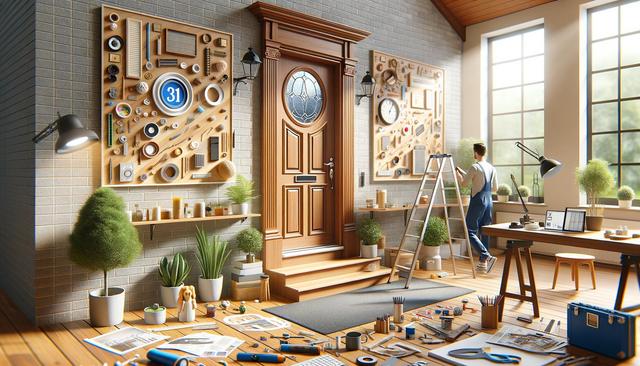A Fresh Start: What to Know About Front Door Replacement
Replacing your front door is a smart upgrade that can enhance security, improve curb appeal, and boost energy efficiency.

Why Consider Replacing Your Front Door?
There are several compelling reasons homeowners opt for front door replacement. One of the most significant is improved security. Older doors, especially those made of outdated materials, can be easier to force open or may have locks that no longer meet modern safety standards. A new front door typically includes upgraded locking systems and sturdier construction, providing peace of mind and better protection.
Another reason is energy efficiency. Older doors might have poor insulation or gaps that allow drafts, leading to higher heating and cooling costs. Modern front doors are designed with energy efficiency in mind, often featuring better sealing technologies and insulated cores. This not only keeps your indoor space more comfortable year-round but can also lower your utility bills.
In terms of aesthetics, a new front door can drastically change the look of your home. Whether you’re planning to sell or just want to enjoy a fresh appearance, replacing your front door is a relatively simple way to make a big impact. It’s an opportunity to choose a style, color, and material that better matches your home’s architecture and your personal taste.
Material Options and Their Benefits
Choosing the right material is one of the most important decisions when replacing a front door. Each material comes with its own set of benefits and considerations, depending on your priorities—whether they are security, maintenance, cost, or style.
- Steel: Known for its strength and durability, steel doors are highly secure and often more affordable than other options. They can be prone to dents and may require periodic painting to prevent rust.
- Fiberglass: This material is resistant to dents, scratches, and rust. It offers excellent insulation and can mimic the look of wood, making it a popular choice for many homeowners.
- Wood: Wood doors are favored for their classic appearance and natural warmth. However, they require more maintenance and may not be as energy-efficient or secure as steel or fiberglass options.
The best material for your door replacement will depend on your climate, budget, and aesthetic preferences. Consulting with a professional can help you make the most informed decision for your home.
Design and Style Considerations
Front door replacement is not just about function—it’s also a chance to enhance your home’s exterior design. There are countless styles and customization options to consider, from traditional paneled wood doors to sleek, modern designs with large glass inserts.
Some popular design elements include:
- Decorative glass panels
- Transoms and sidelights for extra light
- Bold color choices to add personality
- Custom hardware such as handles, knockers, and hinges
Think about how your new door will coordinate with the architectural style of your home and its surrounding features like siding, trim, and landscaping. A well-chosen front door can tie all these elements together, creating a cohesive and inviting entrance.
Installation Process and What to Expect
Understanding the installation process can help you better prepare for your front door replacement project. While some homeowners choose to install doors themselves, hiring a professional often ensures better results—especially when dealing with structural issues or custom fittings.
The typical installation process includes:
- Removing the old door and frame
- Inspecting and preparing the door opening
- Fitting the new frame and door
- Installing weather stripping and insulation
- Testing the door for proper alignment and function
Depending on the complexity of the job, installation can take anywhere from a few hours to a full day. Be sure to clarify timelines, costs, and warranties with your contractor before work begins. Also, consider any additional upgrades you might want, such as smart locks or security peepholes, during the replacement process.
Long-Term Value and Maintenance Tips
A new front door is an investment that offers long-term value in multiple ways. Beyond the immediate benefits of improved security and curb appeal, it can also increase your home’s resale value. Buyers often appreciate the presence of modern, secure entry points as part of a well-maintained property.
To ensure your new door lasts and retains its appearance, regular maintenance is key. Here are a few tips:
- Clean the surface regularly to remove dirt and debris
- Inspect weather stripping and seals for wear every season
- Lubricate hinges and locks to prevent rust or sticking
- Repaint or refinish wood doors as needed to protect against moisture
By taking time to care for your door, you can extend its lifespan and maintain its functionality and beauty for years. Whether you choose a low-maintenance fiberglass model or a traditional wood door, a little upkeep goes a long way.
Conclusion: Making the Right Choice for Your Home
Front door replacement is more than a cosmetic upgrade—it’s a practical improvement that enhances your home’s security, energy efficiency, and overall value. With a range of materials, styles, and features available, there’s a solution to fit every homeowner’s needs and preferences. Taking the time to explore your options and work with reputable professionals ensures a successful project outcome. Whether you’re preparing to sell or simply want to improve your everyday living experience, a new front door can offer both immediate and long-term rewards.